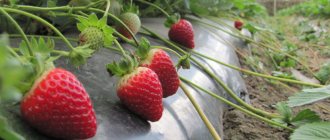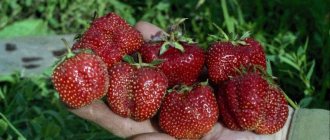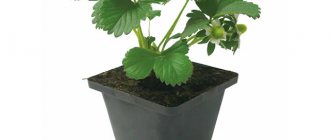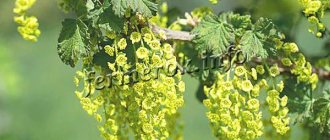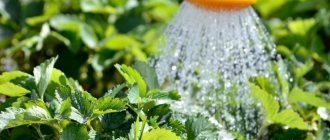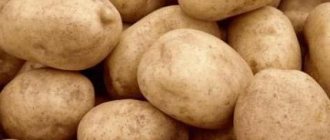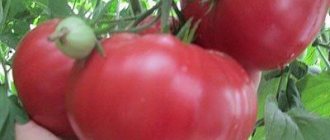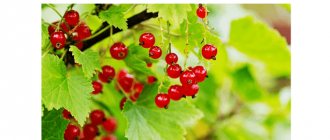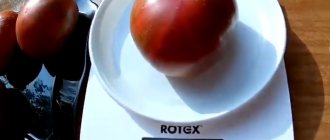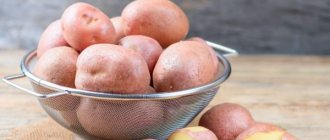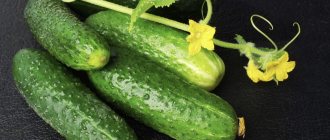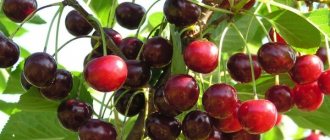The variety was bred for the West Siberian region. Altai breeders worked on strawberries First-grader: N.P. Stolnikova, A.D. Zabelina. Strawberry First-Classer, a photo of which can be seen below, was obtained by crossing two well-known varieties: Torpedo, Fairy.
The main characteristics taken from the description of the First-Class strawberry are large-fruited and productive, which is why gardeners value it so much.
Strawberry First-grader: description of the variety, main indicators and disadvantages, yield, reviews
When thinking about purchasing strawberry seedlings for planting in their garden plot, gardeners are not always interested in whether a given variety is zoned for their specific region. As a result, strawberries may not take root well in an area not intended for their cultivation, produce poor yields, or freeze out during the winter.
Therefore, it is so important to first familiarize yourself with the biological characteristics of specific strawberry varieties, choose those suitable for a particular region, and only then purchase the varieties you like.
There are strawberries that can be grown in many regions of Russia, and they will produce good yields everywhere. But there are varieties that are zoned for specific Russian regions, and they cannot be grown in other places, as they will get sick, the yield will decrease, and the survival rate of seedlings will be low.
One of these varieties will be discussed in this article - the First-Class Strawberry.
The content of the article:
History of breeding of the variety Main characteristics and description Productivity of the variety Diseases and pests Advantages and disadvantages of planting and cultivation Further care How to water beds with strawberries Feeding strawberry bushes Preparing strawberries for winter Reviews of summer residents who grow the strawberry variety First-grader
History of variety development
This variety was bred by breeders N.P. Stolnikova and A.D. Zabelina, who work at the Research Institute of Siberian Horticulture, located in Barnaul. To obtain a new variety, these specialists crossed the Fairy and Torpedo strawberry varieties. Work on developing a new strawberry variety was carried out at the end of the last century, after which it was submitted for inclusion in the State Register of Russia.
Photo of strawberry First-grader
For several years, new strawberries were tested at the experimental site of the Research Institute of Siberian Horticulture, and at the beginning of this century, the variety was included in the State Register of Breeding Achievements, and it was given the name Pervoklassnitsa.
Strawberry First Class is zoned for cultivation only in the West Siberian region.
But it can also be grown in other Russian regions with similar climatic conditions.
Reviews
I have been raising a first-grader for four years. In the conditions of Bashkiria, the variety does not freeze without shelter and is not affected by spring frosts, because blooms later. The first large berries have an uneven shape and a strong acidic taste, but there is a strawberry aroma, so you can eat them. It grows with a minimum of watering and practically without fertilizing, except for dusting with ash. Fruits steadily.
First-grader is not a commercial variety, but many love it for its ease of care, undemanding soil composition and amazing frost resistance. Sweet and sour berries are good for compotes and jam. Large beautiful bushes with soft pink flowers decorate the garden. The variety is ideal for growing on personal plots in the climatic conditions of the West Siberian region.
Strawberry First-grader: main characteristics and description
Strawberry Pervoklassnitsa is not a remontant variety, so the bushes of this variety are harvested only once a year.
On a note!
The ripening period for Pervoklassnitsa berries is mid-late, the first fruits begin to ripen at the end of June.
The bushes are of medium size, quite compact. The foliage is small in size, round in shape, with large teeth along the edges, located on powerful, thickened and well-haired petioles. The outer leaf plates are slightly wrinkled, shiny, the color of the foliage is dark emerald.
Up to 5-8 peduncles are formed on the bushes, each of which is of medium thickness. Up to 8-10 flowers can appear on each peduncle, which do not bloom at the same time. Therefore, the ripening of berries occurs in stages.
The flowers are small in size, male and female, round, with white petals, the core is bright yellow. The First-Class strawberry blooms at the end of May, when the spring return frosts have already passed. Therefore, the buds do not freeze, and as a result, the yield of the variety does not suffer.
The berries are round in shape with clear grooves. The color of the fruit is deep red. The first berries of Pervoklassnitsa are large, weighing up to 30 g, the subsequent ones ripen up to 17-20 g.
Excellent varieties of strawberries:
Strawberry Ruby Pendant Strawberry Tsarina Strawberry Malga
Fruit ripening is gradual, in total there are up to 6-7 pickings of ripening berries per season. After 4-5 harvests, the berries become small. The taste of First-Class strawberries is good, the berries contain a sufficient amount of sugars, but the taste also has a characteristic sourness.
On a note!
The tasting rating of the strawberry variety Pervoklassnitsa is 4.4 points out of 5, which is a good result.
The variety tolerates frosts well in winter down to -33 degrees Celsius,
when there is only a layer of snow up to 6-8 cm thick on the strawberry beds.
Also, the First-grader strawberry plantation tolerates periods of drought, which is convenient for those gardeners who cannot often come to their garden plot and water it.
Collected fruits can be transported to different distances without deteriorating their appearance and taste.
The shelf life of ripe berries, even in the refrigerator, is not too long.
The harvested crop is of universal use, used for fresh food, for making jam, and canning compotes. You can also put ripe berries in the freezer for the winter.
Description
Strawberries of the Pervoklassnitsa variety have large erect bushes that can reach 30 cm in height. The diameter of an adult plant is about 40 cm.
There are many leaves in the rosette, they are large, have dark green plates and are covered with a waxy coating. Along the edge of each there is a row of slightly wavy teeth.
The petioles of the peduncles are thick, pubescent, slightly inclined to the ground. Each has several buds. The flowers are creamy-pink, round, large and bisexual. Flowering does not occur simultaneously.
It is because of its bisexual structure that the variety is considered self-pollinating. Thanks to this, a high yield is always guaranteed.
The fruits have a conical shape with a blunt end; there are grooves along the entire surface of the berry, characteristic of this variety. Ripeness is determined by the rich red color of the fruit with a burgundy tint inside the ribs.
The berries from the first harvest will be the largest, after the fourth they become a little smaller, but the taste and color are completely preserved.
Diseases and pests
Although this strawberry variety has average resistance to many diseases, there are a number of diseases from which it must be protected:
- from different types of rot;
- from some fungal diseases;
- from various spots.
To protect First-Grade strawberry bushes from these diseases, preventive treatment of the berry crop with insecticidal and fungicidal preparations is required. Before the buds begin to bloom, the bushes are treated with copper sulfate or Bordeaux mixture. These drugs help fight fungal spores, as well as spot pathogens.
Advantages and disadvantages
The main advantages of strawberry First-grader include:
- the bushes produce female and male flowers, so this variety is self-pollinating and does not require the presence of other strawberry varieties nearby for pollination;
- Strawberry First-grader is highly resistant to cold and can withstand temperatures down to -35 degrees Celsius;
- the variety is resistant to drought, while the taste of the fruit does not deteriorate;
- the harvested crop tolerates transportation well over different distances;
- good taste of ripe products;
- berries - universal purpose.
But the Pervoklassnitsa variety also has a number of disadvantages:
- mid-late fruit ripening;
- fruiting is extended over time;
- low resistance to a number of fungal diseases and some types of spots;
- productivity is average.
Strawberries First-grader: planting and growing
When choosing a site for this variety of strawberries, you need to know that this berry crop requires good illumination throughout the daylight hours, loose and fertile soil with neutral acidity, and the absence of strong drafts and gusts of cold wind.
It is also important to comply with crop rotation requirements - it is very important to know what crops grew on the site in the previous season. You should not plant strawberries in those beds where strawberries were also grown last season.
It is important to know!
This berry crop should not be planted after flax, potatoes or beets, from which strawberries can be affected by nematodes. When planting strawberries after sea buckthorn, cherries or raspberries, this plant may be affected by verticillium wilt.
Garden strawberries First-grader - video
Garlic, onions, radishes, parsley, and carrots are considered good predecessors for strawberries.
If the place is chosen correctly, then Strawberry First-Grader will feel comfortable.
Planting holes are dug at a distance of 0.3-0.35 m from each other. The row spacing should be at least 0.5-0.6 m.
The soil can be anything, the main thing is that it is not too moist or poorly permeable to moisture and air.
Planting First-Class strawberry bushes can be done both in spring and autumn. But it is better to plan the planting time in the evening or in cloudy weather, so that the plants can better acclimatize to the new place.
Reproduction
The First-Class strawberry plantation should be rejuvenated every 4-5 years. If this is not done, the size of the berries will decrease and the taste of the fruit will deteriorate.
The best way to propagate this variety is through rosettes from numerous whiskers. It is advisable to select in advance the most powerful plants that you plan to propagate. Leave the rosettes closest to the mother bush. Root them in plastic containers. Seedlings with a closed root system, planted by transshipment, take root better in a new location,
Further care for strawberries First-grader
In the future, it is necessary to observe the irrigation regime, loosen the beds in a timely manner, add a layer of mulch to the tree trunk circles, remove weeds and fertilize the First-grader strawberries.
How to water strawberry beds
Strawberries require watering during flowering and fruit ripening. The water application rate is 1 bucket per square area. If the rainy season has arrived, the number of waterings can be reduced. If the weather is hot and dry, then the amount of watering will have to be increased despite the resistance of this variety to drought.
Feeding strawberry bushes
In the last ten days of May, ovaries are actively forming on the First-Class strawberry bushes. During this period, it is necessary to fertilize each bush with potassium salt.
You can also add wood ash between the rows at the rate of 1 handful for each plant. Some gardeners prefer Fertika Lux, which is applied several times a season from the moment the ovaries form until the active ripening of the fruit.
During the fruiting period, fertilizing with organic matter is suitable - cow manure is diluted with water in a ratio of 1:15, infused for 5 days, at least a liter of such fertilizer is applied to each strawberry plant.
Preparing strawberries for winter
When preparing a strawberry plantation for winter, the following agrotechnical measures are required:
- at the beginning of autumn, collect all dry leaves and remnants of vegetation from the beds;
- remove all mustaches with rosettes and foliage;
- carry out water-recharging watering of garden strawberries;
- apply fertilizers containing potassium and phosphorus to the bushes;
- when the air temperature remains stable for a week at -5-7 degrees Celsius, the strawberry bushes should be covered with a layer of dry straw, spruce branches or other covering material.
In winter, you will need to shovel as much snow as possible onto the strawberry beds, which serves as a natural shelter for this berry crop.
How to prepare strawberries for winter? - video
Feeding
Strawberry bushes are in great need of nutrients in late spring, when the leaves grow, in the summer before mass flowering, and when the ovary is forming. Due to the long fruiting period, the First-Class strawberry requires at least 2 feedings during it.
Strawberries respond well to organic matter - an infusion of chicken manure or mullein. The manure is infused for seven days, filled with water 1:1. Liquid organic fertilizer for strawberries contains nitrogen. To balance phosphorus and potassium, you need to add superphosphate and a good source of potassium - ash. Consumption of ash is 1 can per 50 liters of liquid, superphosphate - 300 g for the same volume.
Strawberry First-grader: reviews from summer residents who grow the variety
Natalya, 44 years old: In my opinion, the value of the Pervoklassnitsa strawberry is that it is unpretentious to growing conditions, does not require special care, and its productivity does not suffer from this. This variety has been growing and bearing fruit in my beds for several seasons now; I can say that the harvest is enough not only for food, but also for canning.
Tatyana, 57 years old: The main thing for the Pervoklassnitsa variety is to choose the right site for planting so that there is sun on it from morning to evening. I usually water these strawberries once or twice a week, and I don’t forget about fertilizing, so the variety’s yield is good.
According to the description of the first-grader strawberry, it is unpretentious to care for and produces good yields even in hot, dry times. And high resistance to frost is the main reason why the First-Class strawberry is grown in Western Siberia.
Landing
In autumn, seedlings are planted no later than a month before the onset of persistent cold weather. In the spring, you need to wait until the soil warms up and the threat of frost has passed.
A sunny site is chosen, but if this is not the case in the garden, you can plant a First-Class Girl plantation in partial shade. It should be borne in mind that the bushes are large, tall, and strawberries will need a lot of nutrients. You should not expect a good harvest on humus-poor soil. The optimal soil is light nutritious loam with an acidity level of 5.2-5.5 pH and groundwater at a depth of at least 70 cm.
Digging of the soil is carried out in advance, at least 2 weeks before planting, so that the soil has time to settle. Fertilizers are applied at the rate of a bucket of humus and a glass of ash per m2, the roots of perennial weeds are removed, and in case of high acidity, dolomite flour is used - 400 g/m2.
